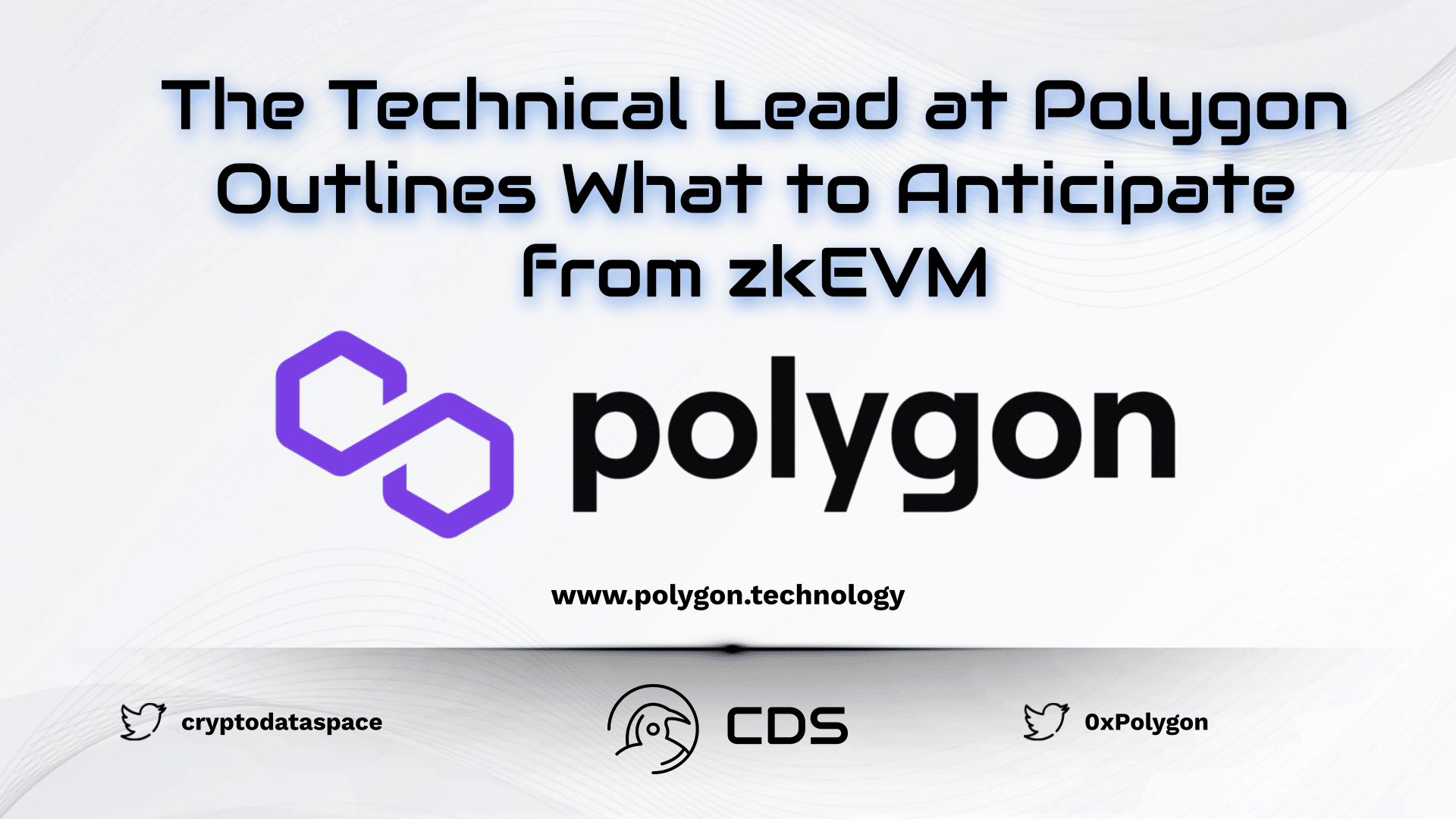For their zkEVM rollup scheduled for March 27, Polygon appears to be the first to deploy an Ethereum mainnet release. With many businesses eager to take advantage of Polygon’s imminent zkEVM rollup, the Ethereum community is poised to see one of the biggest blockchain movements this year.
What to Expect from zkEVM? The Technical Lead at Polygon Outlines What to Anticipate from zkEVM

Cryptographic technology called zero-knowledge (ZK) is revolutionizing the blockchain sector. They adhere to the same regulations as the Ethereum mainnet and run programmable languages and low-level bytecode.
It is a virtual machine that uses zero-knowledge proofs to validate data without disclosing any of the content or attributes of the data. It is a censorship-resistant technology that duplicates the Ethereum mainnet’s transaction execution environment. In addition, the creator of Ethereum, Vitalik Buterin, divided zkEVMs into four primary categories and a fifth. Below is how he categorizes these sorts:
- Type-1: Fully equivalent to Ethereum
- Type-2: EVM (not Ethereum) equivalence
- Type-3: Departing from EVM
- Type-4: Close cousins to the EVM
“The project is a full engineering project. The idea is that with these electronics, we somehow built a processor. On top of that, a program can be written that processes transactions. It’s a full stack of components with different teams working in each of these layers in these stacks.”
Jordi Baylina, technical team building the Polygon
Technological Information
An ERC-20 transfer will establish special data infrastructures with the rollup, including and containing elements like stack, memory, and opcodes, such as ProgramCounter, GlobalCounter, EVMWord, GasInfo, and GasCost. In contrast to EVMWord, which contains a 32-bit long u8 array, the PC and GC are both encapsulated to usize.
Competition for zkEVM Dominance

The race to launch a successful product on the market is on. A number of initiatives are vying to be the first fully functional and EVM-equivalent zkEVM, with Polygon zkEVM, zkSync, StarkNET, and Scroll being some of the leading competitors.
The open-source zkEVMs seek to reduce transaction costs by up to 90%, and zkSync 2.0 is operational on the Ethereum Testnet, enabling programmers to create Solidity smart contracts. The Scroll is developing a highly composable system that focuses on security and transparency, while StarkNET uses ZK-STARKs, which are more secure but have restrictions.















Leave a comment